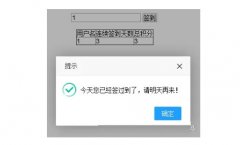php URL编码解码函数代码
时间:2023-12-13接下来我将为你提供一份详细的 "PHP URL编码解码函数代码" 攻略:
1. 什么是PHP URL编码解码?
如果你从事 PHP Web 开发,你可能会经常遇到 URL 中出现特殊字符的情况。这时,我们需要对 URL 进行编码,以便确保 URL 可以正确传输。
URL 编码是将文本数据转换为一种格式,以便浏览器可以将其传送到 Web 服务器上。PHP 中提供了几个常用的函数来执行 URL 编码和解码,分别是 urlencode() 和 urldecode()。
2. urlencode()函数
urlencode() 函数是PHP中用于对URL进行编码的函数。此函数可以将字符串转换为符合URL编码规则的格式,使其可以被传输到 Web 服务器上。
下面是 urlencode() 函数的语法格式:
string urlencode ( string $str )
其中,$str 是要进行编码的字符串。
下面是一个使用 urlencode() 函数的示例:
<?php
$website = "http://www.example.com/index.php?name=张三&age=28";
echo urlencode($website);
?>
输出结果为:
http%3A%2F%2Fwww.example.com%2Findex.php%3Fname%3D%E5%BC%A0%E4%B8%89%26age%3D28
可以看到,$website 中包含了中文字符和特殊符号,经过 urlencode() 函数编码后,URL 被转换成了一串 % 符号和数字的组合。
3. urldecode()函数
urldecode() 函数是 PHP 中用于对 URL 进行解码的函数。此函数可以将 URL 编码过的字符串转换为普通字符串。
下面是 urldecode() 函数的语法格式:
string urldecode ( string $str )
其中,$str 是要进行解码的字符串。
下面是一个使用 urldecode() 函数的示例:
<?php
$url = "http://www.example.com/index.php?name=%E5%BC%A0%E4%B8%89&age=28";
echo urldecode($url);
?>
输出结果为:
http://www.example.com/index.php?name=张三&age=28
可以看到,$url 中包含了被编码的字符,经过 urldecode() 函数解码后,URL 变成了原来的字符串。
4. 总结
如果你在 PHP Web 开发中需要对 URL 进行编码和解码处理,那么 urlencode() 和 urldecode() 函数都是非常好用的工具。这些函数能够确保特殊字符和中文字符等数据在 URL 传输过程中不被损坏,从而提供更加稳定和可靠的 Web 服务。
希望这份攻略能够对你有所帮助!
 PHP+ajax+mysql+layui实现每日签到及提醒功能这篇文章主要为大家详细介绍了使用 PHP + layui 实现每日 签到 及提醒功能,具有一定的参考价值,感兴趣的小伙伴们可以参考一下,首次签到获得1个积分,第二次签到获得2个积
PHP+ajax+mysql+layui实现每日签到及提醒功能这篇文章主要为大家详细介绍了使用 PHP + layui 实现每日 签到 及提醒功能,具有一定的参考价值,感兴趣的小伙伴们可以参考一下,首次签到获得1个积分,第二次签到获得2个积